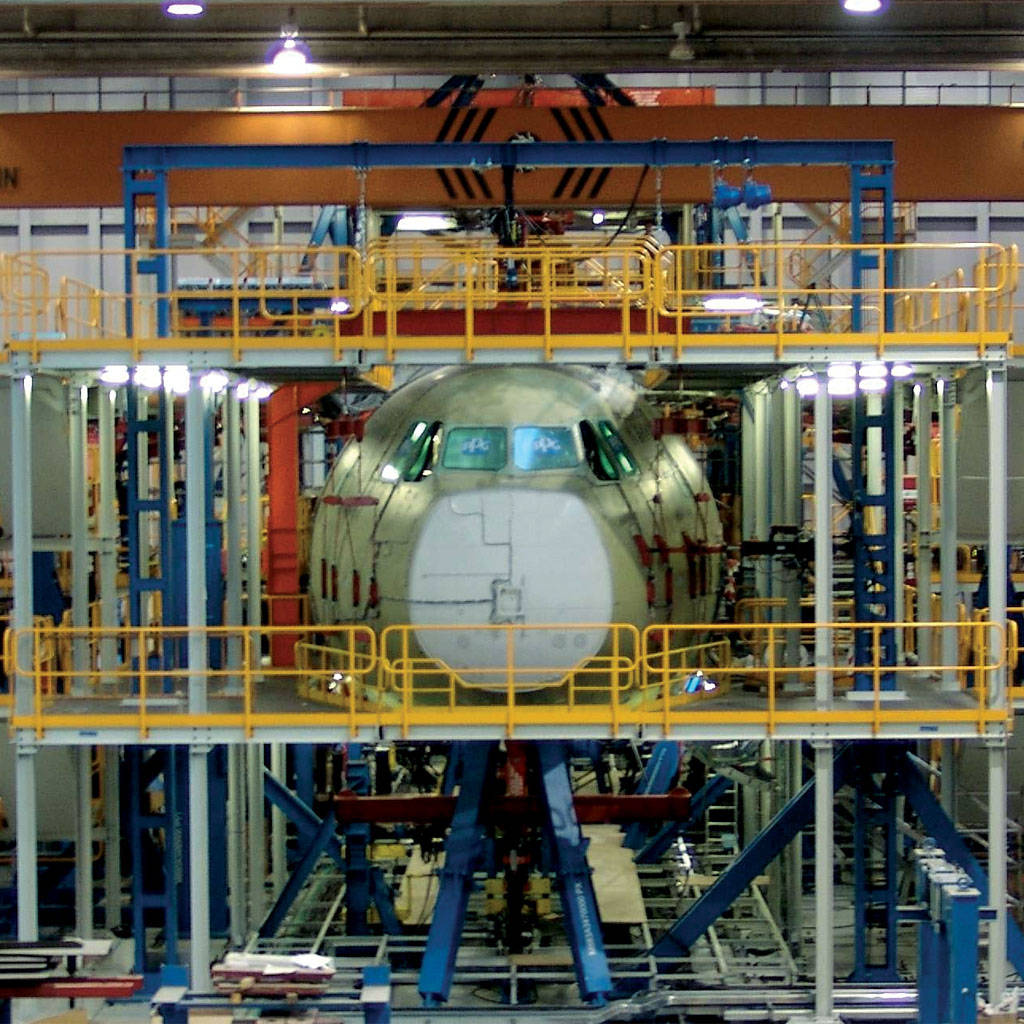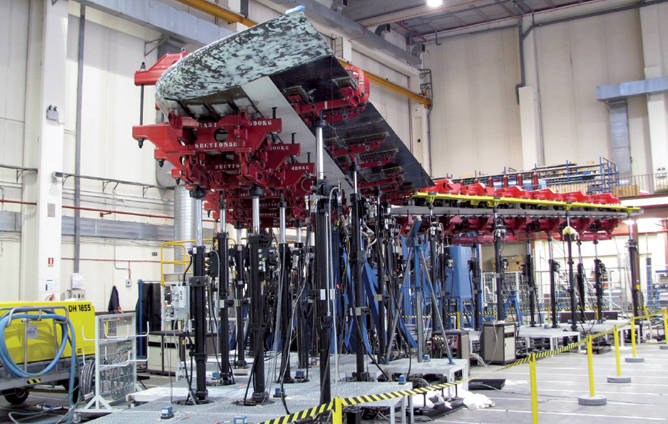
CUSTOMER CHALLENGE
Headquartered in Getafe, Spain, Airbus Military (formerly EADS CASA-MTAD) has been responsible for the design, production and testing of hallmark military aircraft over the last several decades. After program approval in 2003, Airbus began work on the next high-profile project: the development of the medium-duty Airbus A400M military transport aircraft.
The four-engine turboprop plane is unique in its relatively large size and its ability to be refueled while airborne. Orders for 180 A400M aircrafts are already scheduled for Germany, France, Spain, United Kingdom, Turkey, Belgium, Luxembourg and Malaysia. During the development process, the first full-scale test article was assembled at Getafe, while at the same time the test rig was growing around and inside the aircraft. The goal was to set up the complete test in six months after the wing arrival to Getafe from Seville.
“The schedule for this aircraft left us with no time for delays,” said Angel Gago, Head of Structural Test Laboratory, Airbus Military. “During testing, our challenge would be to achieve the highest levels of efficiency while also preserving the structural integrity of the test article throughout the process.”
Structural testing for the Airbus A400M requires 120 control channels and more than 9,000 strain gages, with the ability to read 6,000 gages at once. Massive loads must also be applied to the test articles to simulate the aircraft’s real-world operating conditions. Gago knew that with a setup involving such high complexity and forces, maintaining test article integrity would require the ability to both load and unload the test system with absolute precision.
“A system malfunction could set us back months of valuable engineering time if the test article were to sustain any damage,” Gago said. “Such failures are rare, but it was a risk we could not take. It was essential for us to be able to immediately and evenly remove energy from the test rig at any time in a controlled manner.”
MTS SOLUTION
The Airbus Military relationship with MTS began more than 20 years ago. “We first started working with MTS back in 1978, and five years later MTS helped us successfully move our testing inside a closed servocontrol loop for the first time,” Gago said. “We now use AeroPro™ software for all of our aircraft testing, and the integrated control and data acquisition capabilities make it easy for us to manage all of our test activity in real time.
“We were pleased to discover that MTS not only offers advanced technology in this area, but that the technology can be managed from within the same AeroPro software interface that we were already using,” Gago added. “MTS’ ability to provide the complete testing solution including all the actuators, controls and software, allowed us to move ahead more rapidly.”
MTS helped Airbus Military add Active Load Abort (ALA) systems to each of its test rigs to be used for the Airbus A400M aircraft. ALA technology helps to safeguard test articles by providing tight control over structural test system unloading in the event of a power loss or system interlock.
During such an event, the ALA system employs measures, at both the software and hardware levels, to reduce all actuator loads to a neutral state at precisely the same time, regardless of varying pressures and individual actuator positions. A separate control system runs parallel to the load control system, taking the state of the entire test into account when removing hydraulic pressure from the test article. The system senses a failure on the control side, and then works to instantly and evenly remove the load from the entire test article.
“MTS worked closely with us every step of the way until our ALA system was fully integrated and operational,” Gago said. “Now, this system operates consistently across our test lab, which we manage alongside our servocontrol and data acquisition in the AeroPro environment.”
CUSTOMER BENEFITS
Gago says that the main benefit of MTS ALA technology is that it has allowed Airbus Military to bring a new way of thinking about how to protect test articles used during structural testing from any system malfunctioning or unexpected behaviors.
“We are now confident in knowing that our test articles are well safeguarded from damage during testing,” Gago said. “Our test engineers can focus on the test itself, without having to worry about how an unexpected failure on the test rig might eradicate their hard work.”
According to Jesus Posada, Head of Structural Test at Airbus Military, MTS will also be involved when the test lab enters the next fatigue testing phase. “We will soon plan to improve our fatigue test speed, and we plan to rely on MTS’ testing expertise to help us to improve this kind of testing,” Posada said. “We’ve heard a lot about AeroPro software tools for accelerating dynamic testing, and we look forward to taking full advantage of them in the near future.”
C

